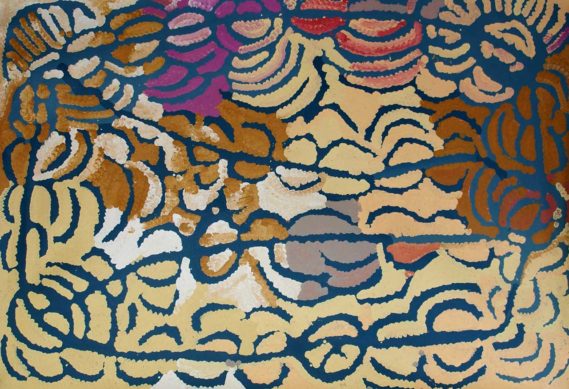 Lorna Napurrula Fencer | Yarla Jukurrpa – Bush Yam DreamingJap 001391 | acrylic on canvas | 205 x 144 cm
| 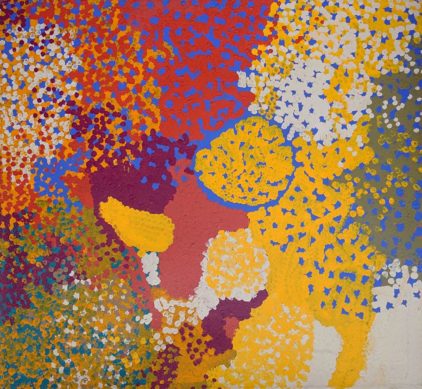 Lorna Napurrula Fencer | Yirrjirlparti Jukurrpa – Caterpillar DreamingJap 001058 | acrylic on canvas | 152 x 138 cm
| 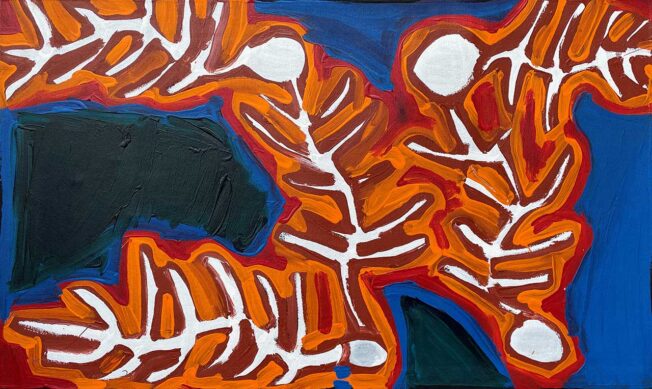 Karen Barnes Napaljarri | Ngapa – Water DreamingJap 022603 | acrylic on canvas | 85 x 50 cm
| 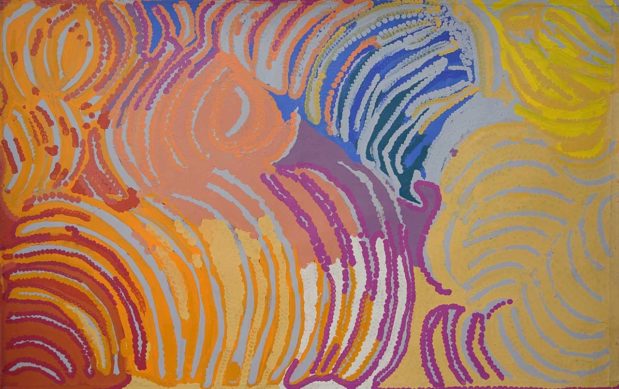 Lorna Napurrula Fencer | Karli – Boomerang DreamingJap 001323 | acrylic on canvas | 203 x 126 cm
| 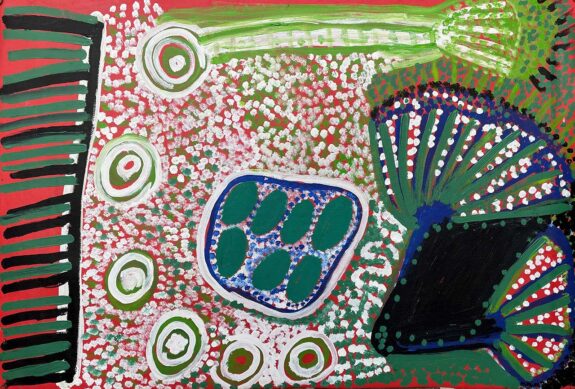 Molly Tasman | Seed DreamingJap 021147 | acrylic on canvas | 97 x 63 cm
| 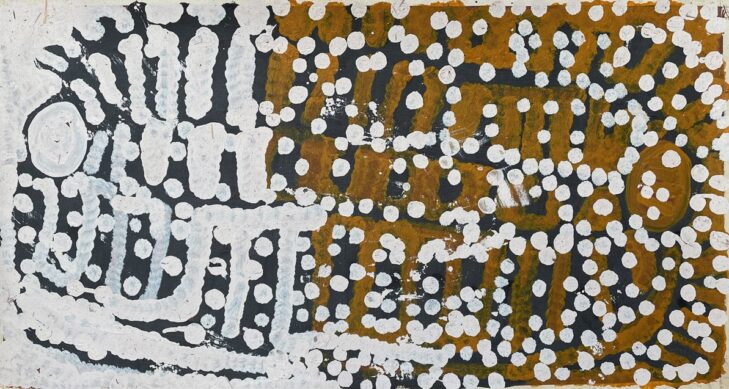 Lorna Napurrula Fencer | Janmarra – Bush OnionJap 001598 | acrylic on canvas | 82 x 43 cm
| 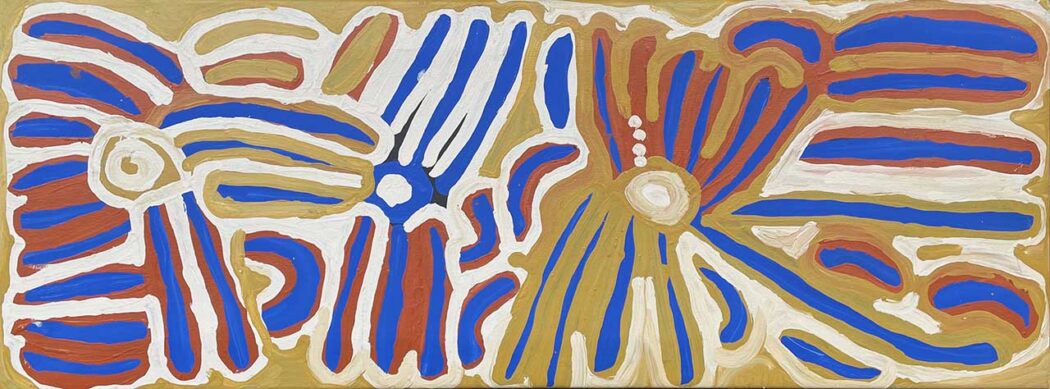 Lily Nungarrayi Hargraves | Women’s CeremonyJap 000649 | acrylic on canvas | 138 x 50 cm
| 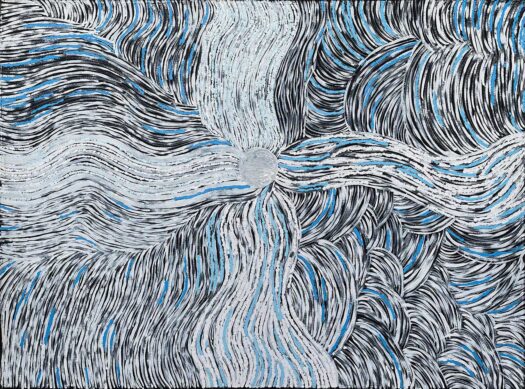 Ursula Napangardi Marks | Bush Potato Dreaming – Yarla JukurrpaJap 021160 | acrylic on canvas | 120 x 90 cm
| 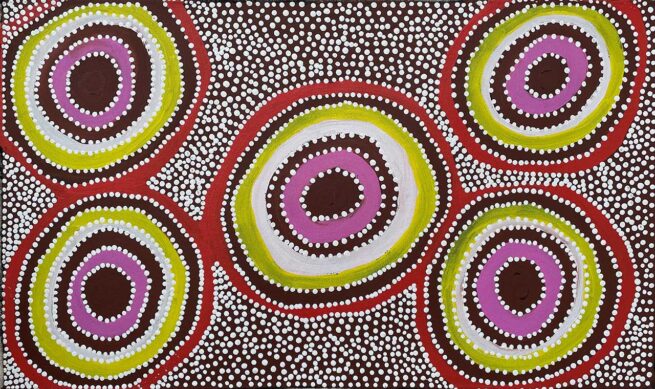 Biddy Timms Napanangka | Yuparli Jukurrpa – Bush BananaJap 022615 | acrylic on canvas | 85 x 50 cm
| 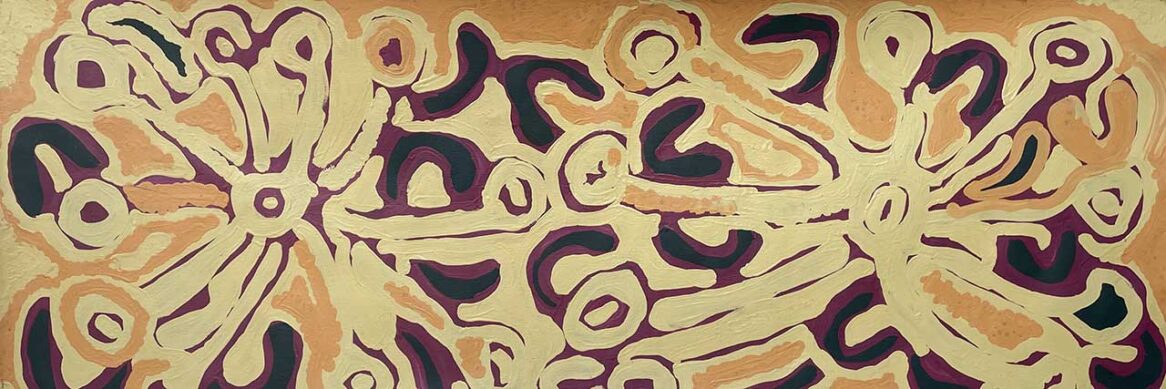 Lily Nungarrayi Hargraves | NyalyabiJap 000623 | acrylic on canvas | 138 x 48 cm
| 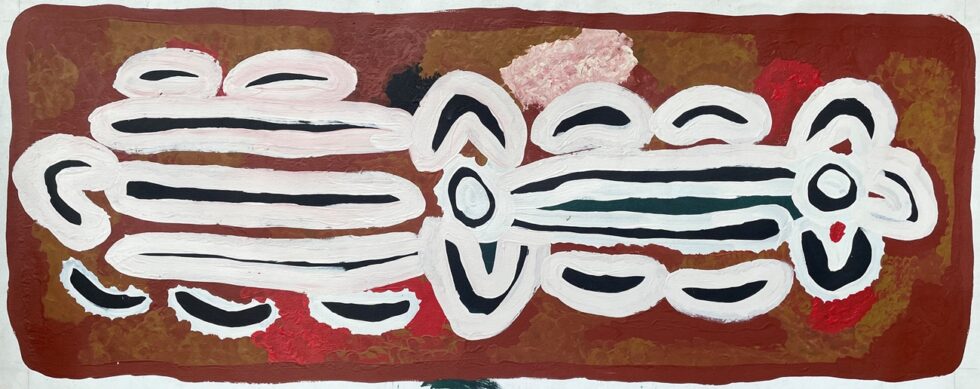 Lily Nungarrayi Hargraves | Women’s DreamingJap 000634 | acrylic on canvas | 138 x 48 cm
| 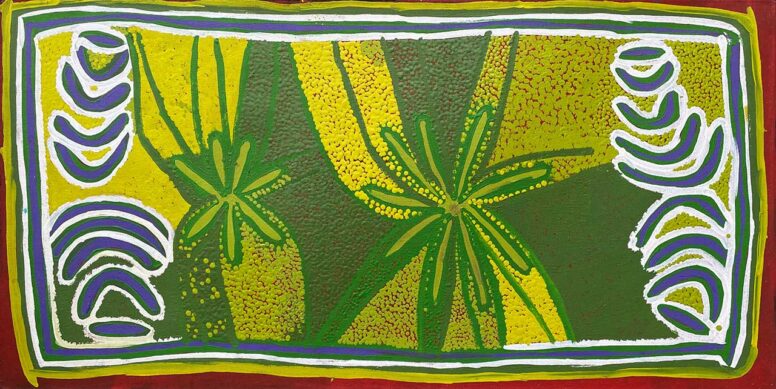 Rosie Tasman | Seed DreamingJap 022624 | acrylic on linen | 120 x 60 cm
| 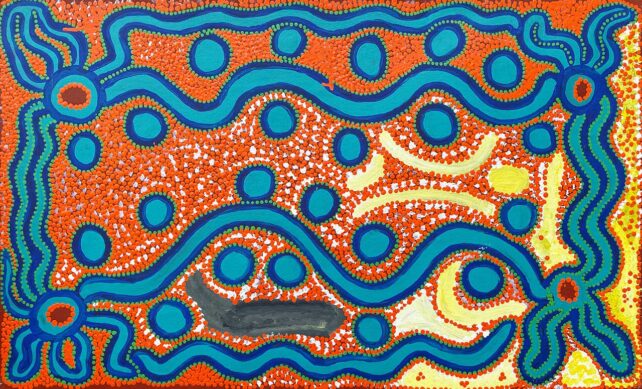 Molly Tasman | Seed DreamingJap 022632 | acrylic on canvas | 85 x 50 cm
| 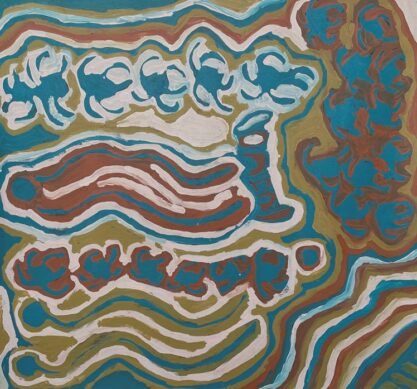 Beryl Nakamarra Barnes | Yarla – Bush PotatoJap 022527 | acrylic on canvas | 83 x 77 cm
| 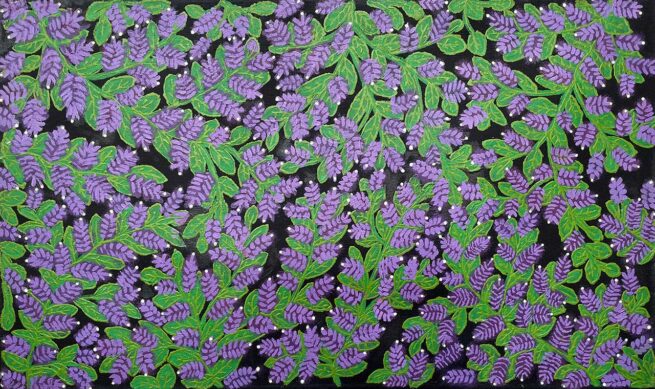 Robyn Payton/Herbert | Bush Flower Dreaming – Jinjirla JukurrpaJap 021154 | acrylic on canvas | 85 x 50 cm
| 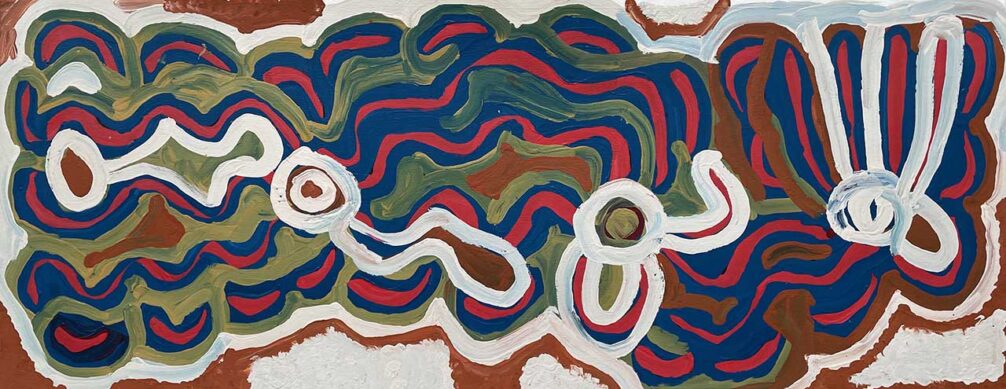 Lily Nungarrayi Hargraves | UntitledJap 000627 | acrylic on canvas | 138 x 50 cm
| 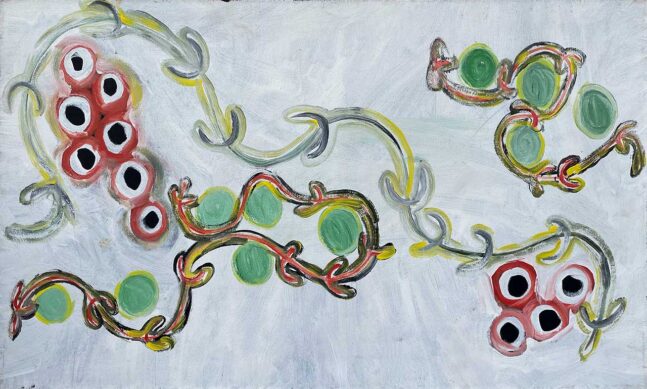 Ursula Napangardi Marks | Ngayaki Jukurrpa – Bush Tomato DreamingJap 022609 | acrylic on canvas | 85 x 50 cm
| 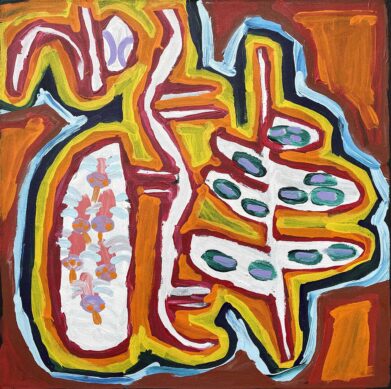 Karen Barnes Napaljarri | Ngapa – Water DreamingJap 022602 | acrylic on canvas | 55 x 55 cm
|  Molly Tasman | Seed DreamingJap 021152 | acrylic on canvas | 85 x 50 cm
| 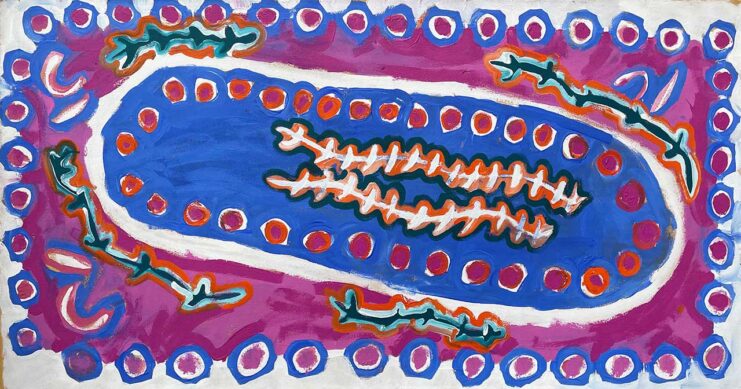 Ursula Napangardi Marks | Ngayaki Jukurrpa – Bush Tomato DreamingJap 022607 | acrylic on canvas | 120 x 60 cm
| 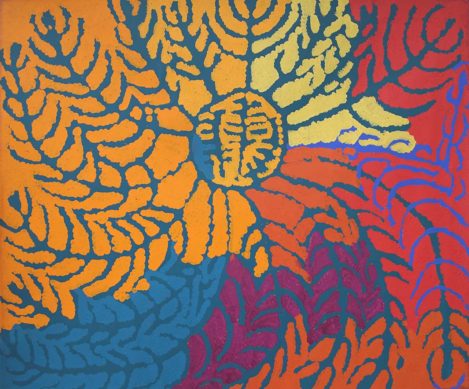 Lorna Napurrula Fencer | Wapirti – White Bush PotatoJap 001284 | acrylic on canvas | 172 x 140 cm
| 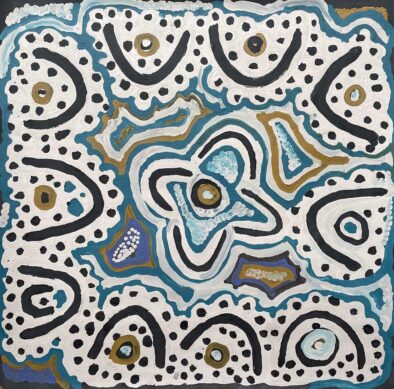 Lily Nungarrayi Hargraves | Bush Turkey Dreaming Women’s CeremonyJap 000636 | acrylic on canvas | 84 x 83 cm
|  Judy Napangardi Martin | Karntakurlangu- Digging Stick CeremonyJap 000412 | acrylic on canvas | 124 x 85 cm
| 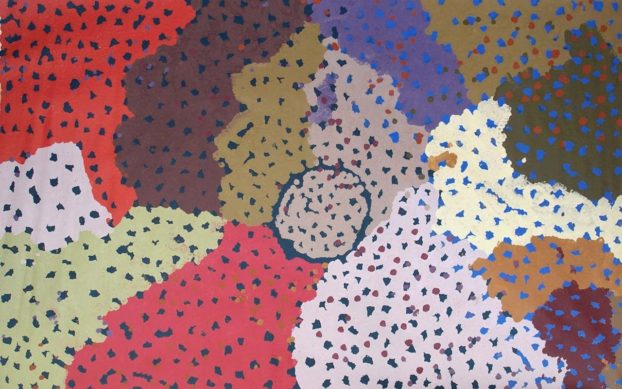 Lorna Napurrula Fencer | Jajurtuma Jukurrpa – Caterpillar DreamingJap 001530 | acrylic on canvas | 229 x 144 cm
| 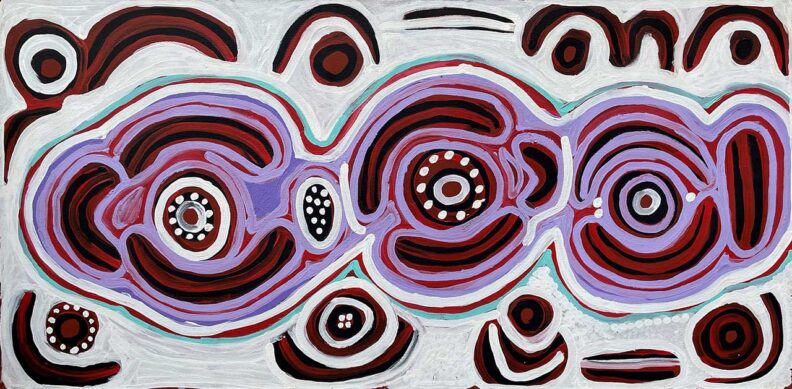 Rosie Tasman | Seed DreamingJap 022625 | acrylic on canvas | 120 x 60 cm
| 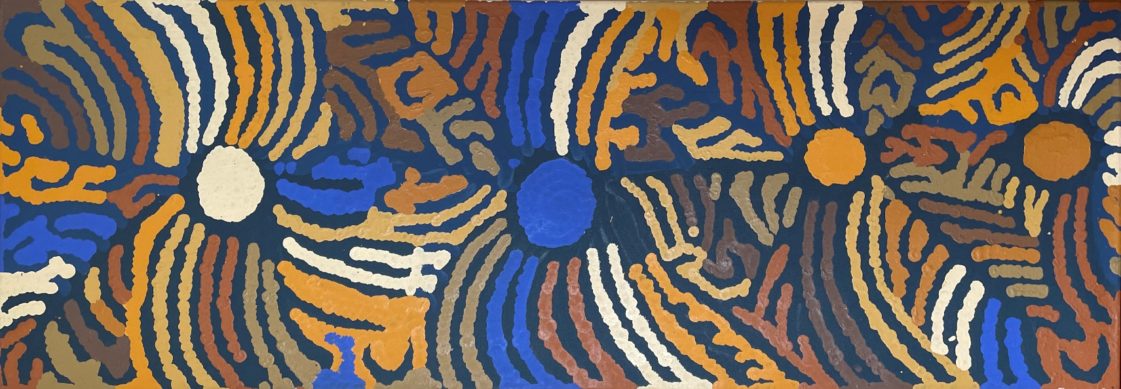 Judy Napangardi Martin | Yarla Jukurrpa – Yam DreamingJap 000504 | acrylic on canvas | 173 x 60 cm
| 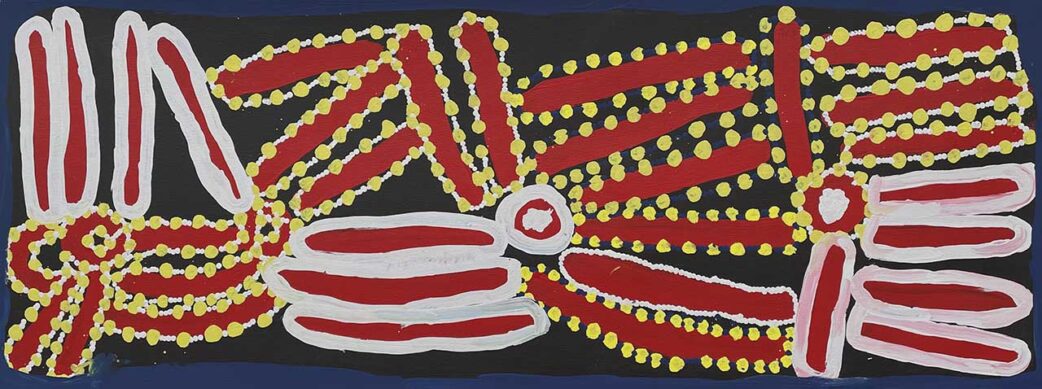 Lily Nungarrayi Hargraves | Women’s Ceremony – Dancing StickJap 000631 | acrylic on canvas | 138 x 48 cm
| 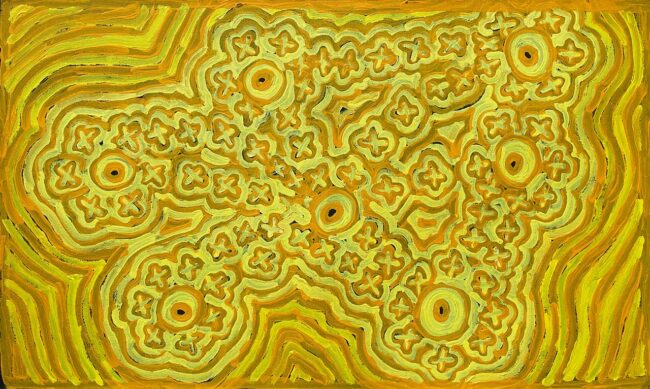 Elizabeth Nungarrayi Ross Nanginarra | Ngatijirri Jukurrpa – Budgerigar DreamingJap 022612 | acrylic on canvas | 85 x 50 cm
| 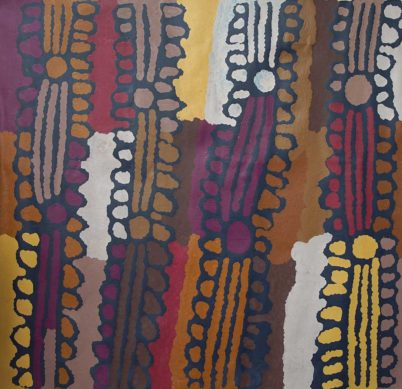 Judy Napangardi Martin | Warnarri CeremonyJap 000461 | acrylic on canvas | 145 x 126 cm
| 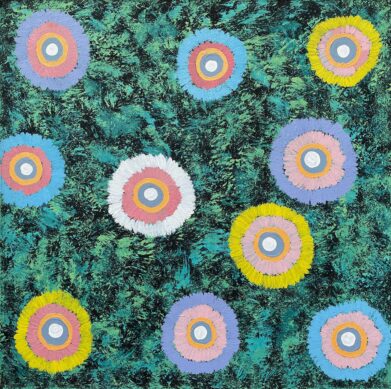 Mercia Napurrurla Lewis | Seed DreamingJap 022618 | acrylic on canvas | 55 x 55 cm
| 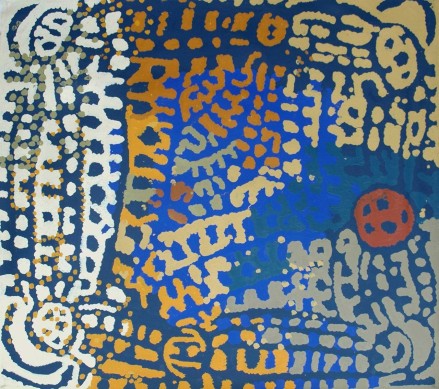 Lorna Napurrula Fencer | Yapa Jukurrpa – Jupurrula DreamingJap 001498 | acrylic on canvas | 158 x 143 cm
| 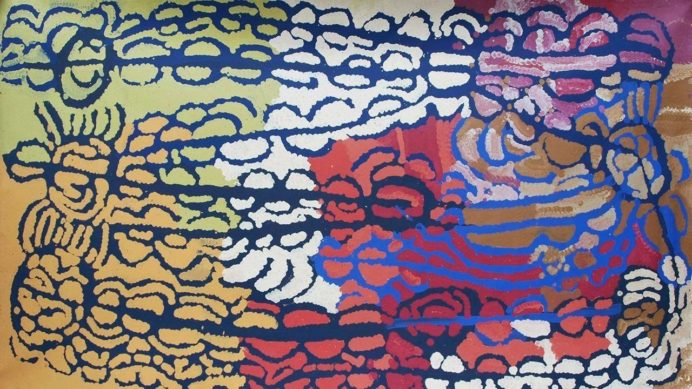 Lorna Napurrula Fencer | Warpurti – White Bush PotatoJap 001070 | acrylic on canvas | 261 x 146 cm
| 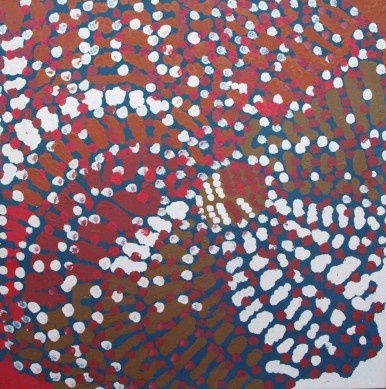 Lorna Napurrula Fencer | Warpurti – White Bush PotatoJap 001572 | acrylic on canvas | 84 x 84 cm
|  Karen Barnes Napaljarri | Yuparli Jukurrpa – Bush BananaJap 022604 | acrylic on canvas | 80 x 30 cm
| 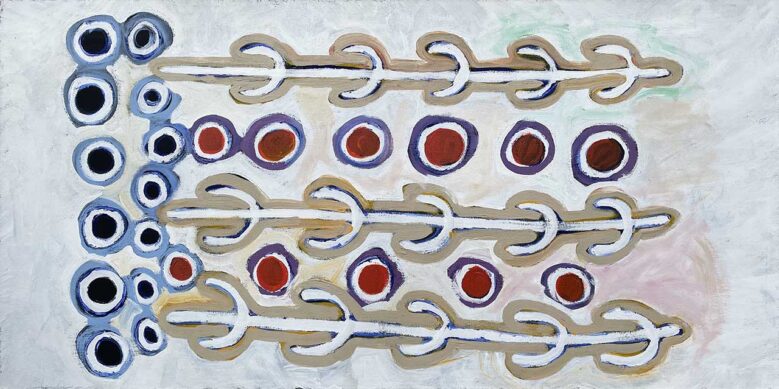 Ursula Napangardi Marks | Yarla Jukurrpa and Bush Tomato NgayakiJap 022608 | acrylic on canvas | 120 x 60 cm
| 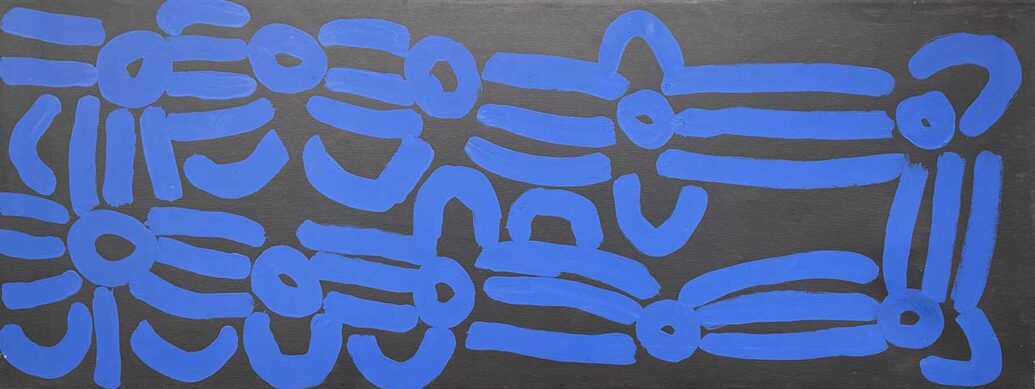 Lily Nungarrayi Hargraves | Women’s Ceremony – Dancing StickJap 000647 | acrylic on canvas | 138 x 48 cm
| 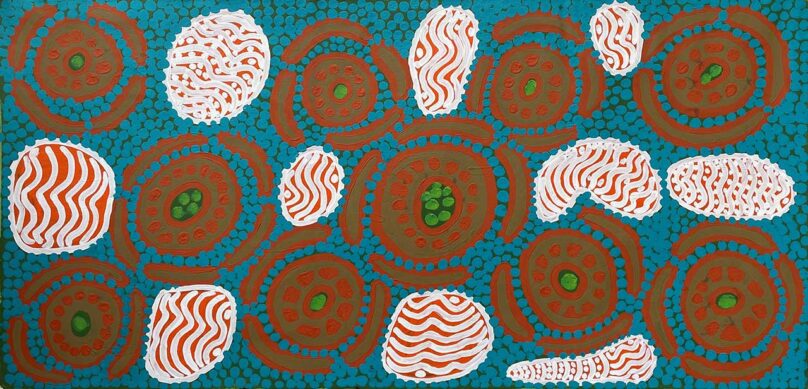 Molly Tasman | Seed DreamingJap 022626 | acrylic on canvas | 85 x 50 cm
| 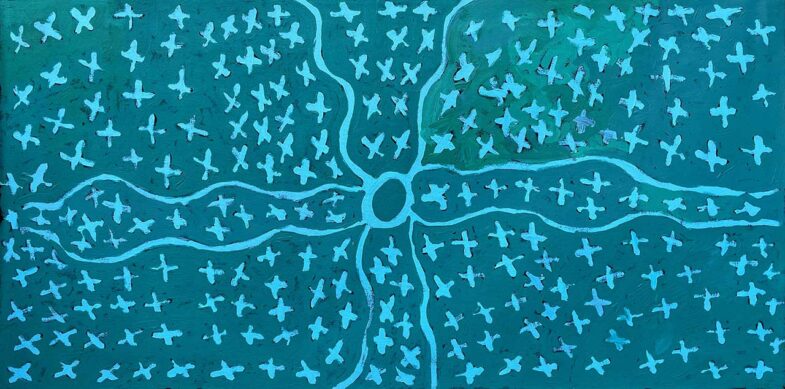 Elizabeth Nungarrayi Ross Nanginarra | Ngatijirri Jukurrpa – Budgerigar DreamingJap 022611 | acrylic on canvas | 120 x 60 cm
| 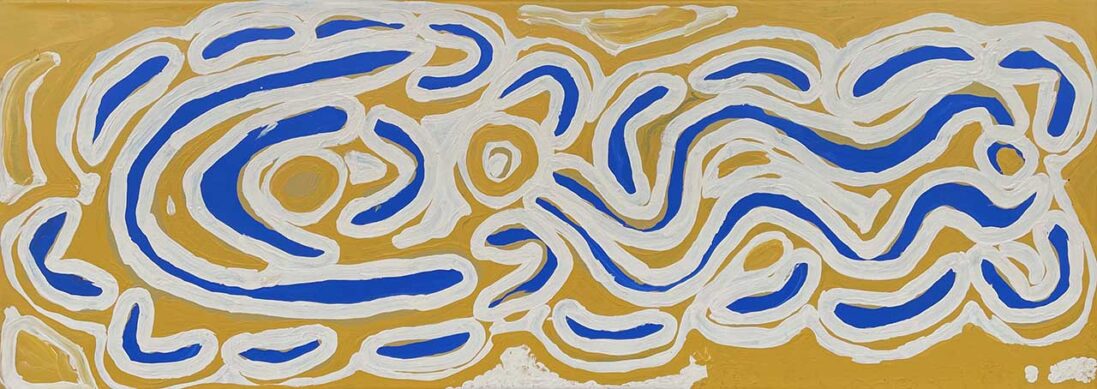 Lily Nungarrayi Hargraves | Jungarai DreamingJap 000641 | acrylic on canvas | 48 x 138 cm
| 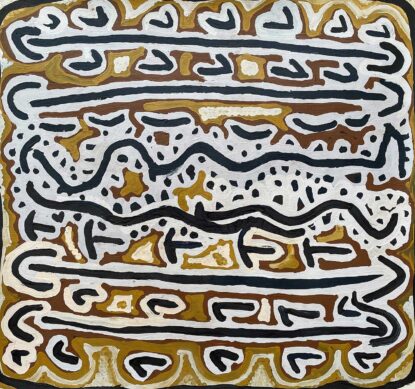 Lily Nungarrayi Hargraves | Marla Wallaby and Bush Turkey Dreaming at Jila WellJap 000643 | acrylic on canvas | 76 x 83 cm
|  Lorna Napurrula Fencer | Yarla Jukurrpa – Bush Yam DreamingJap 001310 | acrylic on canvas | 183 x 138 cm
| 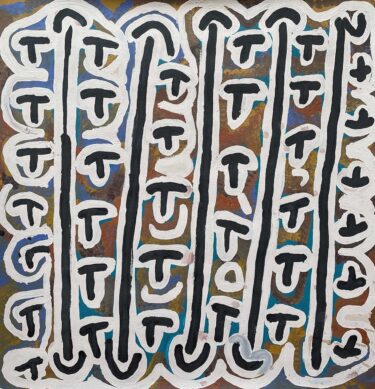 Lily Nungarrayi Hargraves | Bush Turkey DreamingJap 000637 | acrylic on canvas | 84 x 84 cm
| 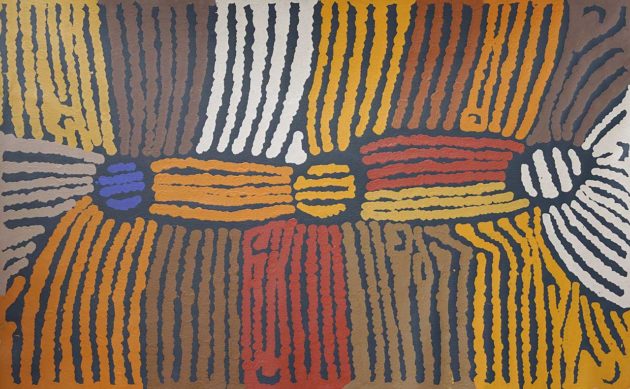 Judy Napangardi Martin | Yarla Jukurrpa – Yam DreamingJap 000497 | acrylic on canvas | 144 x 88 cm
| 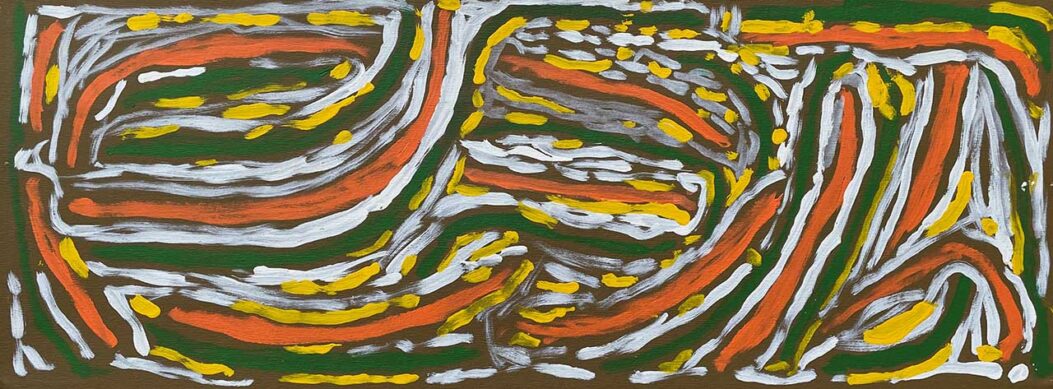 Myra Patrick Herbert | Bush Vine Dreaming NgalyipiJap 022620 | acrylic on canvas | 80 x 30 cm
| 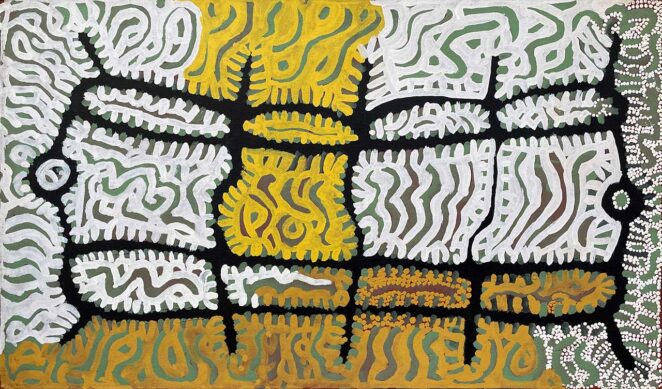 Molly Tasman | Seed DreamingJap 022627 | acrylic on linen | 85 x 50 cm
|  Lily Nungarrayi Hargraves | Women’s DreamingJap 000635 | acrylic on canvas | 138 x 48 cm
| 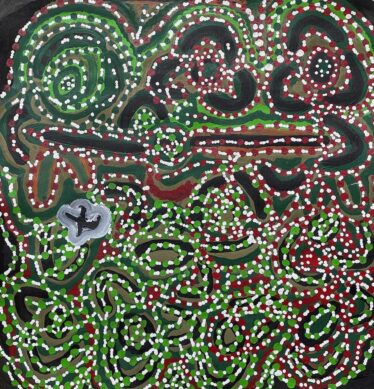 Lily Nungarrayi Hargraves | Women’s DreamingJap 000630 | acrylic on canvas | 90 x 92 cm
| 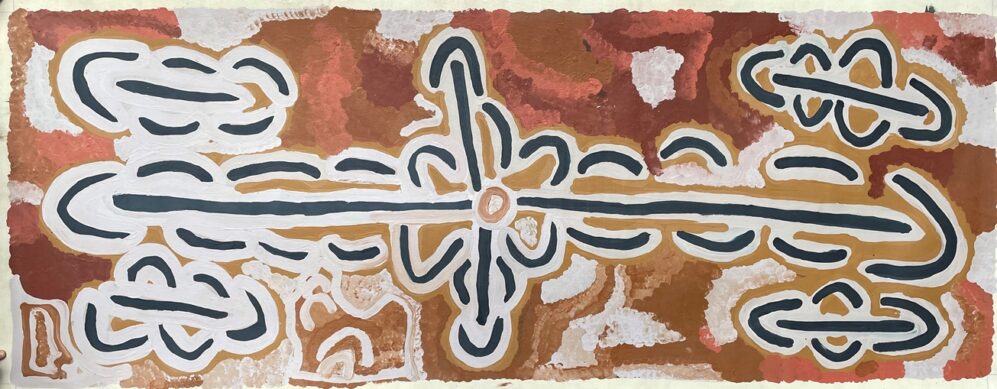 Lily Nungarrayi Hargraves | Dogbone – Women’s CeremonyJap 000639 | acrylic on canvas | 173 x 65 cm
| 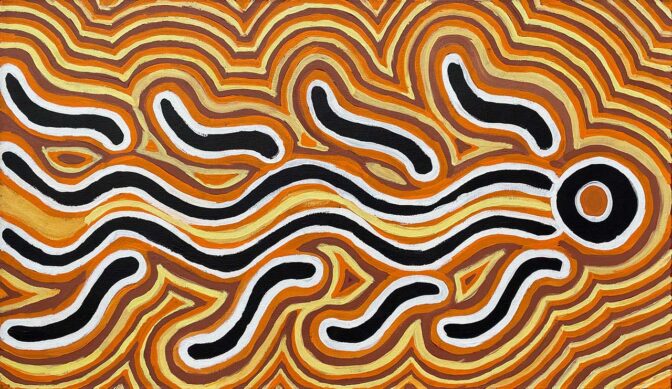 Mercia Napurrurla Lewis | WarilingkiJap 022619 | acrylic on canvas | 85 x 50 cm
| 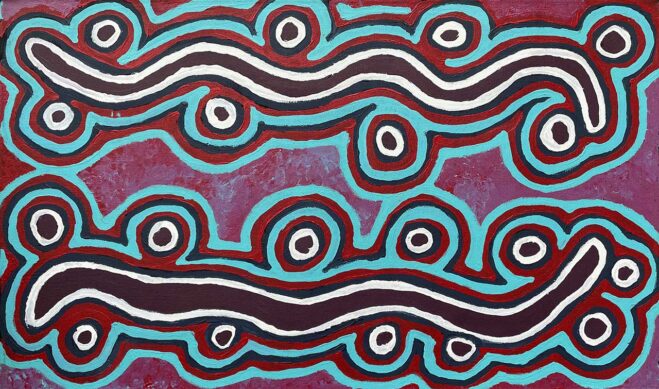 Biddy Long Yulngarri | Purrparlarla DreamingJap 022630 | acrylic on canvas | 85 x 50 cm
| 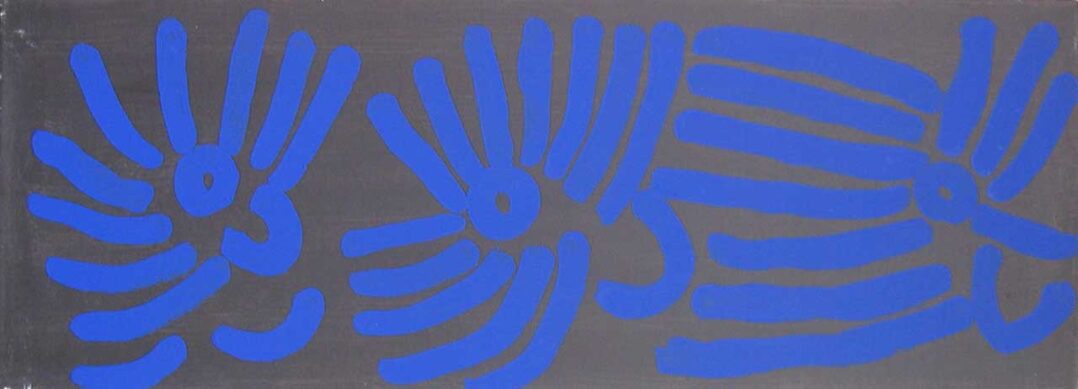 Lily Nungarrayi Hargraves | Women’s Ceremony – FirewoodJap 000648 | acrylic on canvas | 138 x 48 cm
| 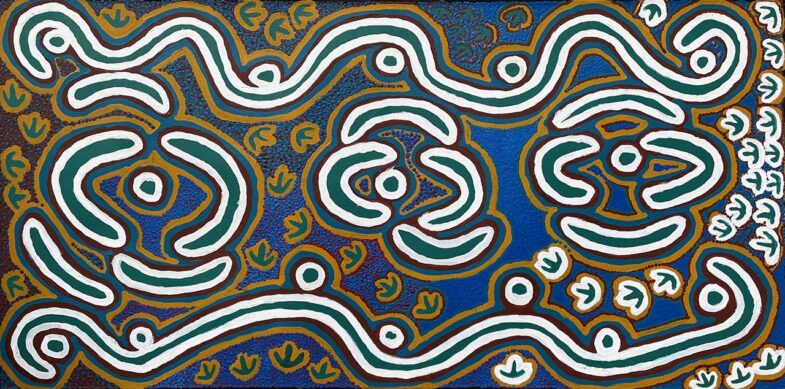 Biddy Long Yulngarri | Wardilyka Jukurrpa – Bush Turkey DreamingJap 022628 | acrylic on canvas | 120 x 60 cm
|  Lorna Napurrula Fencer | Jajurtuma Jukurrpa – Caterpillar DreamingJap 001585 | acrylic on canvas | 156 x 124 cm
|  Neil Cooke | Granite CountryJap 022606 | acrylic on linen | 120 x 60 cm
| 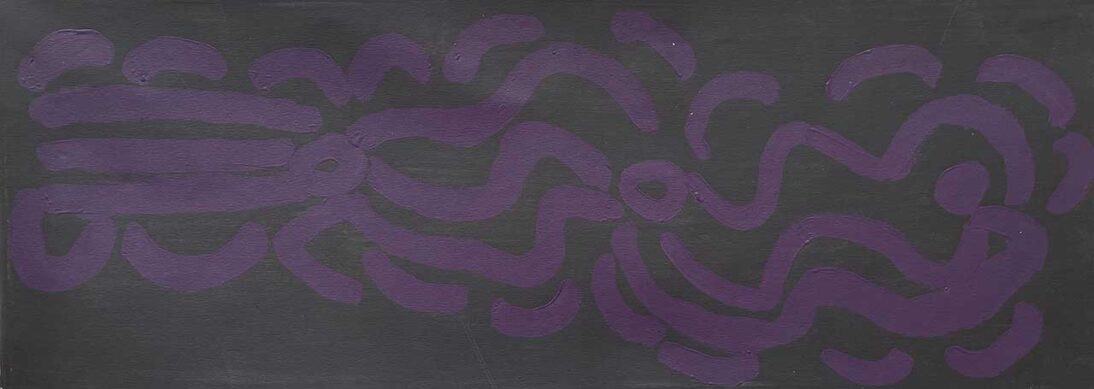 Lily Nungarrayi Hargraves | Warna DreamingJap 000628 | acrylic on canvas | 53 x 40 cm
| 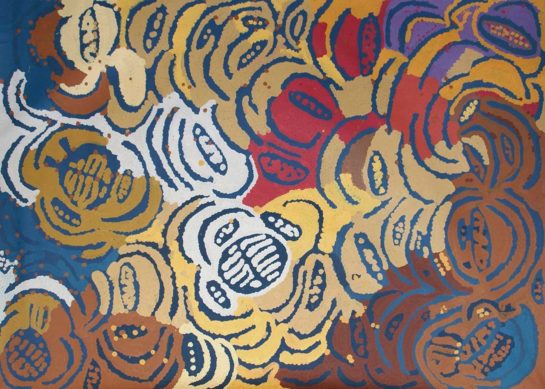 Lorna Napurrula Fencer | Yapa Jukurrpa – Jupurrula DreamingJap 001590 | acrylic on canvas | 246 x 176 cm
|  Lorna Napurrula Fencer | Yarla Jukurrpa – Bush Yam DreamingJap 001269 | acrylic on canvas | 138 x 89 cm
| 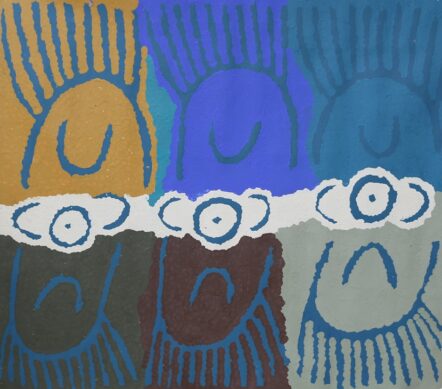 Judy Napangardi Martin | Marjarri – Ceremonial Bush SkirtJap 000426 | acrylic on canvas | 110 x 97 cm
| 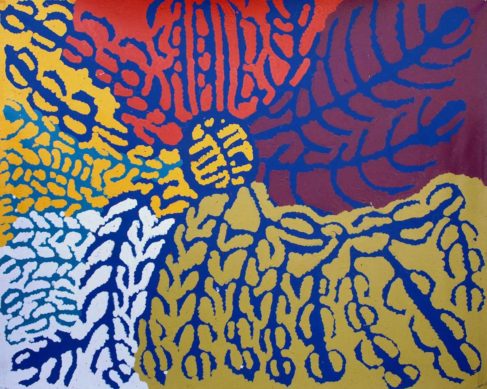 Lorna Napurrula Fencer | Yarla Jukurrpa – Bush Yam DreamingJap 001241 | acrylic on canvas | 167 x 138 cm
| 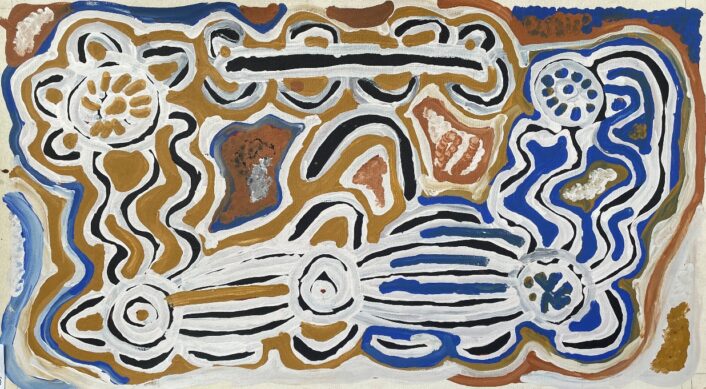 Lily Nungarrayi Hargraves | Women’s Dreaming – Dogbone – KurlurrlarlimpaJap 000650 | acrylic on canvas | 80 x 43 cm
| 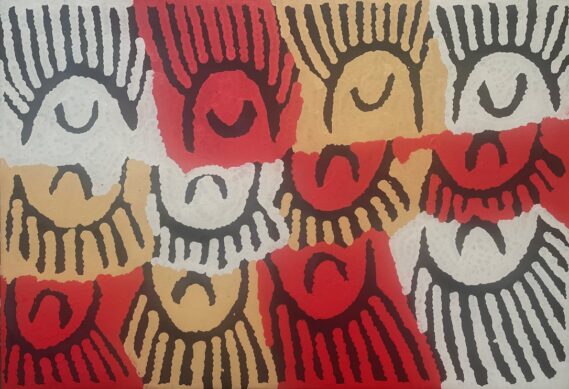 Judy Napangardi Martin | Marjarri – Bush BeltJap 000424 | acrylic on canvas | 124 x 85 cm
| 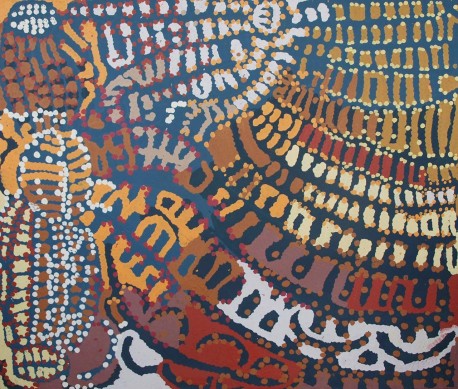 Lorna Napurrula Fencer | Yarla Jukurrpa – Bush Yam DreamingJap 001565 | acrylic on canvas | 176 x 153 cm
|  Lorna Napurrula Fencer | Yapa II – Big Dreamtime FightJap 001060 | acrylic on canvas | 219 x 140 cm
|































































